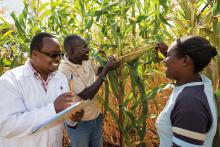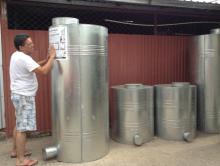Land Library
Welcome to the Land Portal Library. Explore our vast collection of open-access resources (over 74,000) including reports, journal articles, research papers, peer-reviewed publications, legal documents, videos and much more.
/ library resources
Showing items 1 through 9 of 31.Building on the current international discourse and United Nation's System of Environmental-Economic Accounting (SEEA) this study provides further empirical evidences on how failure to include natural capital resources in national accounting leads to erroneous calculation of macroeconomic estimat
The presented paper synthesizes and reviews the history of Fist Nation land management, forming the background of three land management regimes types; the Indian Act land management (IALM), First Nations land management (FNLM) and frameworks of self-government land management (SGLM).
Whereas ecosystem service research is increasingly being promoted in science and policy, the utilisation of ecosystem services knowledge remains largely underexplored for regional ecosystem management.
Evidence-based policy guidance necessary for addressing mixed outcomes of community-based rangeland management (CBRM) is limited, dominated by case studies, and lacking coverage of diverse ecological settings.
In a long-term project in Kenya, the Swiss-based Research Institute of Organic Agriculture has examined the potential of organic and conventional agriculture regarding soil fertility, the occurrence of pests and diseases, and profitability.
Most stakeholder-based research concerning agri-environmental schemes (AES) derives from work engaging with farmers and land managers. Consequently, the voices and opinions of other actors involved in AES tends to be unrepresented in the wider literature.
Societal drivers including poverty eradication, gender equality, indigenous recognition, adequate housing, sustainable agriculture, food security, climate change response, and good governance, influence contemporary land administration design.
Globally, there is growing demand for increased agricultural outputs. At the same time, the agricultural industry is expected to meet increasingly stringent environmental targets. Thus, there is an urgent pressure on the soil resource to deliver multiple functions simultaneously.
Like in other areas of livestock keeping, the growing demand for fish raises the question of how the feeding of animals can be maintained without competing with the provision of food for humans.



